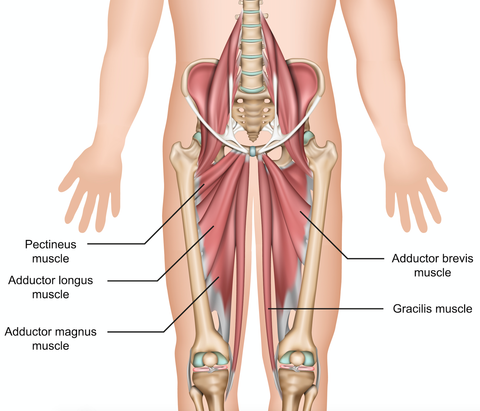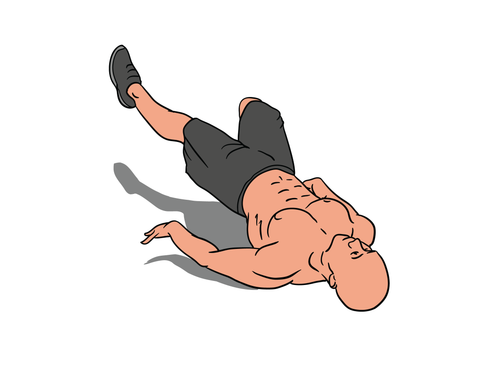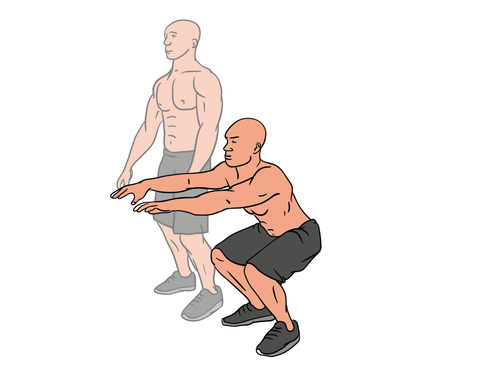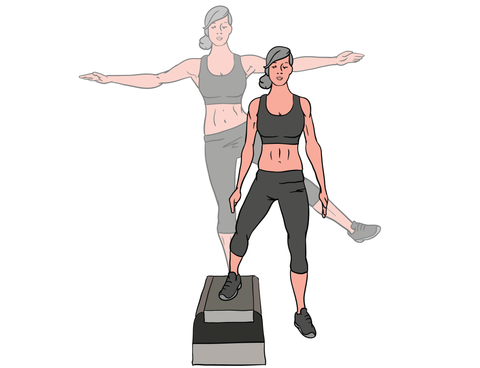Treating Common Sports Injuries - Tendinitis of the Adductor Muscles

Hip Adductor Muscles
Hip Adductors - Trigger Point Anatomy
Tendinitis of the Adductor Muscles - The pain is similar to a groin strain but onset is gradual and chronic in nature
Inflammation in the adductor muscle tendons or tendon sheaths due to overuse can cause pain in the groin area. Sprinting, football, soccer, hurdling and horse riding can all cause overuse in these muscles. Unresolved injuries such as groin strain can also lead to tendinitis.
The adductor muscles include the pectineus, adductor longus, adductor brevis, gracilis and adductor magnus and the tendons of any of these may become inflamed. The pain is similar to a groin strain but onset is gradual and chronic in nature.

Cause of injury
Repetitive stress to the adductor muscles. Previous injury such as groin strain. Tight gluteal muscles.Trigger points that cause their host muscles to become shorter, tighter, and less efficient.
Signs and symptoms
Pain in the groin area. Pain when bringing the legs together against resistance. Pain when running, especially sprinting.
Complications (if left unattended)
If left unattended, tendinitis of the adductor muscles can lead to imbalance and injury to the other muscles of the hip joint. It can also result in a tear of one or more of the adductor muscles.
Immediate Treatment
Ice and rest from activities that cause pain. Anti-inflammatory medication. Heat and massage to promote blood flow and healing.
Rehabilitation and Prevention
Rehabilitation for tendinitis of the adductors starts with gradual reintroduction into activity with stretching and strengthening exercises for the affected muscles. Use heat packs on the affected area before exercise at first, then continue with good warm-up activities to make sure the muscles are ready for activity.
Strengthening the adductors and stretching the opposing abductors will help prevent this injury from recurring. Rehabilitating all groin pulls and other hip injuries completely will also prevent problems with the adductors.
Long-Term Prognosis
Long-term problems are seldom seen with tendinitis of the adductor muscles after treatment. If pain and limited mobility in the hip persists, additional investigations may be required from a sports medicine specialist.
Useful Rehabilitation Exercises

Lunge
With a dumbbell in each hand resting at your sides, step forward with one foot while letting your opposite knee fall almost to the ground. Push upward, returning to the start position, then step forward with your other foot letting your other knee do the same.

Single-legged gluteal raise hold
Lie on your back with your arms at your sides. Keep one leg straight and bring the other foot up towards your backside. Raise your backside off the ground, hold for a second and then lower again. Repeat with your other leg.

Body weight squat
With your feet shoulder width apart, reach your hands out in front of you and bend your knees like you are about to sit in a chair. Slowly return to standing and repeat.

Side step lunge
With one foot elevated on a support, bring your arms out from your sides and lift your other leg up and away from your body to the side.
This trigger point therapy blog is intended to be used for information purposes only and is not intended to be used for medical diagnosis or treatment or to substitute for a medical diagnosis and/or treatment rendered or prescribed by a physician or competent healthcare professional. This information is designed as educational material, but should not be taken as a recommendation for treatment of any particular person or patient. Always consult your physician if you think you need treatment or if you feel unwell.
Education Membership Plans
Unlimited Access to All Courses
$19.95/monthly

About Niel Asher Education
Niel Asher Education (NAT Global Campus) is a globally recognised provider of high-quality professional learning for hands-on health and movement practitioners. Through an extensive catalogue of expert-led online courses, NAT delivers continuing education for massage therapists, supporting both newly qualified and highly experienced professionals with practical, clinically relevant training designed for real-world practice.
Beyond massage therapy, Niel Asher Education offers comprehensive continuing education for physical therapists, continuing education for athletic trainers, continuing education for chiropractors, and continuing education for rehabilitation professionals working across a wide range of clinical, sports, and wellness environments. Courses span manual therapy, movement, rehabilitation, pain management, integrative therapies, and practitioner self-care, with content presented by respected educators and clinicians from around the world.
Known for its high production values and practitioner-focused approach, Niel Asher Education emphasises clarity, practical application, and professional integrity. Its online learning model allows practitioners to study at their own pace while earning recognised certificates and maintaining ongoing professional development requirements, making continuing education accessible regardless of location or schedule.
Through partnerships with leading educational platforms and organisations worldwide, Niel Asher Education continues to expand access to trusted, high-quality continuing education for massage therapists, continuing education for physical therapists, continuing education for athletic trainers, continuing education for chiropractors, and continuing education for rehabilitation professionals, supporting lifelong learning and professional excellence across the global therapy community.

Continuing Professional Education
Looking for Massage Therapy CEUs, PT and ATC continuing education, chiropractic CE, or advanced manual therapy training? Explore our evidence-based online courses designed for hands-on professionals.


















